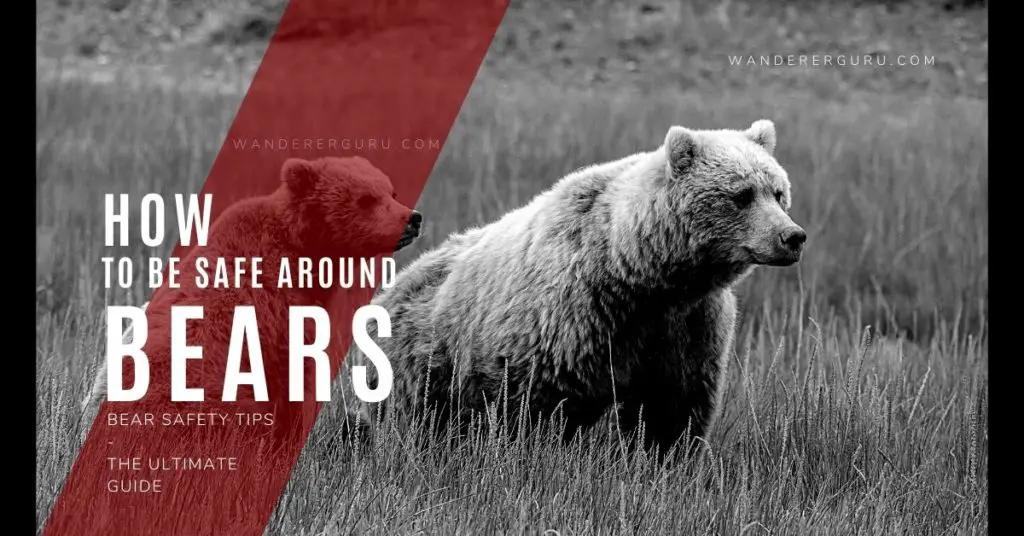In order to avoid any unplanned encounters with bears, it is important for hikers and campers to be aware of how to properly store and dispose of food scraps. By following a few simple guidelines, you can help keep both yourself and the bears safe and Happy Out Here! For more bear safety tips, continue reading. I guarantee you would be having enough information about how to stay safe around bears after reading this guide. And remember, if you see a bear, don’t run! Just calmly back away and make lots of noise so the bear knows you’re there.
bear country quick safety tips
1. When hiking or camping in bear country, be sure to store all food and garbage securely. Bears are attracted to the scent of food, so it’s important to keep everything sealed tightly.
2. If you’re cooking in bear country, be sure to dispose of all food scraps properly. Don’t leave anything behind that might attract a bear.
3. If you see a bear, don’t run! Just calmly back away and make lots of noise so the bear knows you’re there.
4. Avoid hiking alone if possible. Make noise while you hike, such as singing or clapping your hands, to avoid surprising a bear.
5. Carry bear spray with you and know how to use it. Bear spray is a last resort defense against an aggressive bear. Check out my favorite and best-selling one on Amazon.
6. Keep your campsite clean and free of food odors. Store all food, garbage, and anything with a scent in airtight containers.
7. Never approach a bear, even if it appears to be friendly. A bear that has become used to humans is often relocated or killed because it’s a danger to people.
8. If you see a bear while hiking, make yourself as small as possible by crouching down. Move slowly and avoid direct eye contact. Do not run, as this may trigger a chase response from the bear.
9. If you see a bear while camping, stay in your tent and make noise to scare it away. Do not try to attract the bear’s attention by shining a light at it or waving your arms.
10. In the event of a bear attack, fight back! Use whatever you have to defend yourself, such as bear spray, a stick, or your fists. The goal is to make yourself as big and scary as possible to the bear.
Bonus:
BEST 6 PERSON TENT – TOP 6 PERSON TENTS FOR CAMPING
Planning Your Visit To Bear Country
Before planning a visit to bear country. Be aware of times when bears are most active, and avoid hiking or camping alone during those times. Make noise while hiking to avoid surprising a bear, and carry bear spray in case of an attack. If you see a bear while camping, stay in your tent and make noise to scare it away.
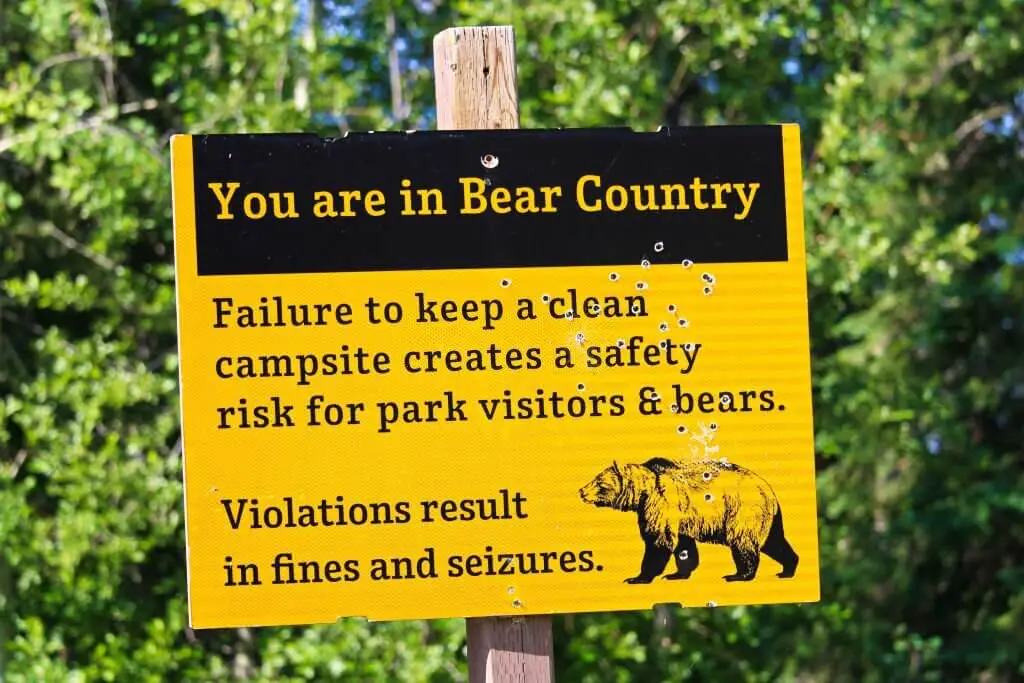
Find and read your park regulations
The bear rules and regulations differ from park to park. So, you have to read the park instructions and guidelines before visiting.
For example, you should carry bear sprays in the parks where the bear lives. This includes the Grand Teton or Glacier National Park. The use of bear spray is permitted here. But, on the other hand, the use of bear spray is prohibited in the Yosemite where only the black bear lives.
You can check the visitor’s information and ticket charges from here. (BEARCOUNTRYUSA)
Bear country USA map
You can find a map of all the bear countries in the USA here. This map will help you to know about the areas where you should take proper safety measures.
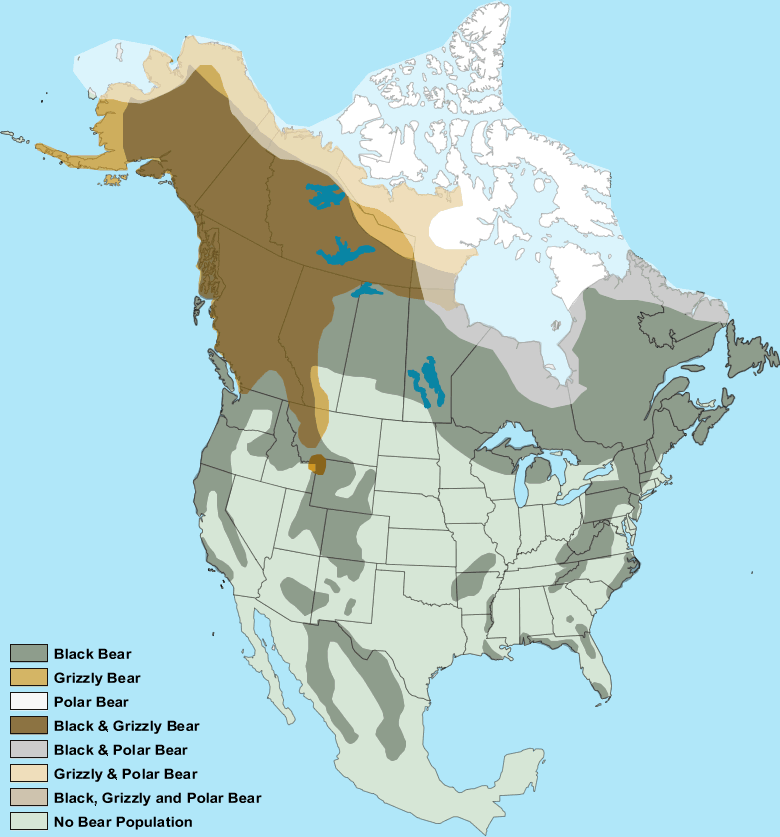
Bonus:
BEST CAMPING TENT FOR THE MONEY
Know Your Bears
It is important to know the difference between black bears and grizzly bears, as this can help you determine the best course of action to take if you encounter one.
Polar bear vs. Grizzly bear
Polar bears are larger than grizzly bears and have longer claws. They are also more aggressive and have been known to attack humans. If you see a polar bear while hiking or camping, make noise to scare it away. For more see here.
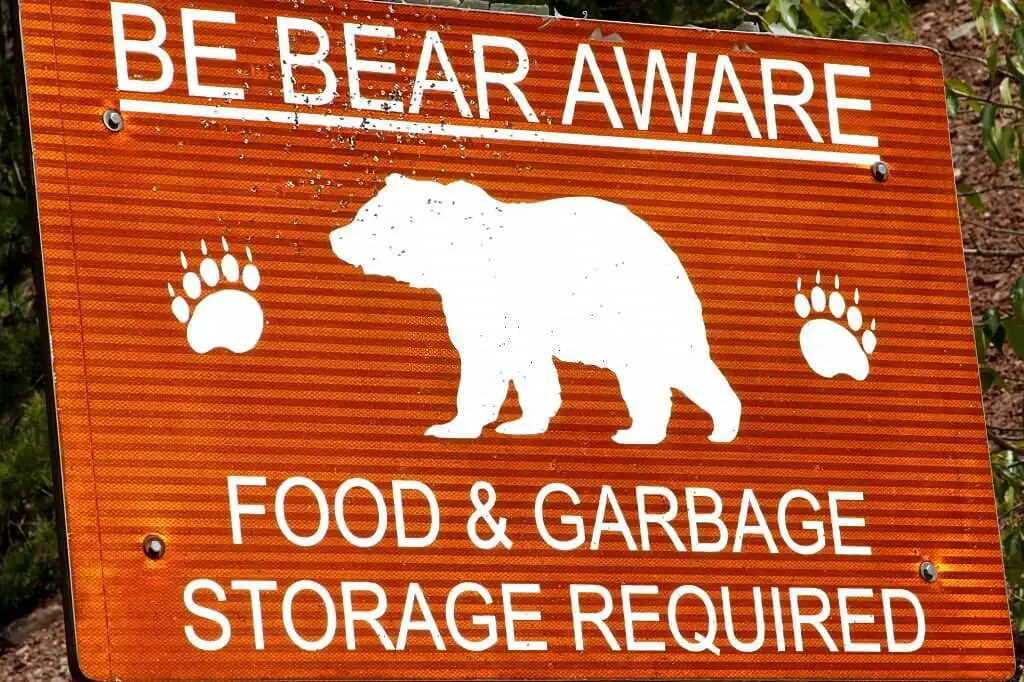
Black VS. Grizzly Bear
The main difference between Grizzly and Black bears is; Black bears are typically smaller than grizzly bears and are not as aggressive. However, both types of bears can be dangerous if they feel threatened. If you see a bear while hiking or camping, make noise to scare it away.
There are two bear species in the contiguous United States: black bears and grizzly bears. There are about 375,000 black bears and approximately 1,700 grizzly bears in the Lower 48 States. It is important to be able to distinguish between grizzly and black bears.
Center for Wildlife Information
Difference between Grizzly and Brown bear
The main difference between the Grizzly bear and the Brown bear is explained in the infographic below. You can check this for more about bear identification.
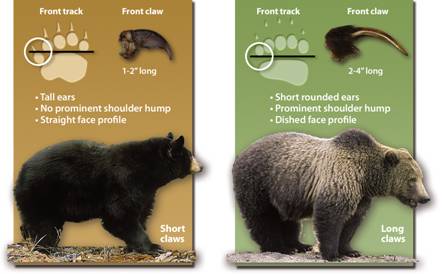
Bonus:
HOW TO REMOVE CAMPFIRE SMELL FROM CLOTHES
Carry Bear Spray – Use only when needed
One of the best ways to protect yourself from a bear attack is to carry bear spray. Bear spray is a type of pepper spray that is designed to deter bears. It is important to read the instructions below carefully before using bear spray.
Our Recommended bear sprays ( Tested and reviewed )
Mace Bear Spray
It has a single canister but is very much effective and affordable.
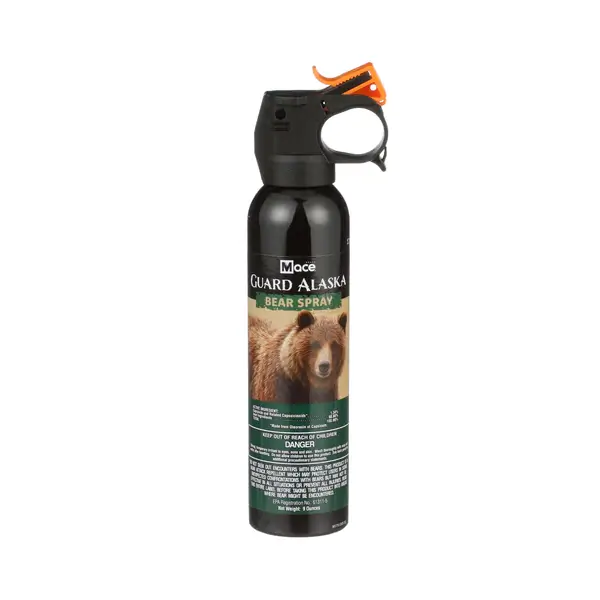
Bear Spray For Couples
Udap 12DCH bear pepper spray has two canisters with two holsters. This is very effective and easy to carry during hiking or camping.
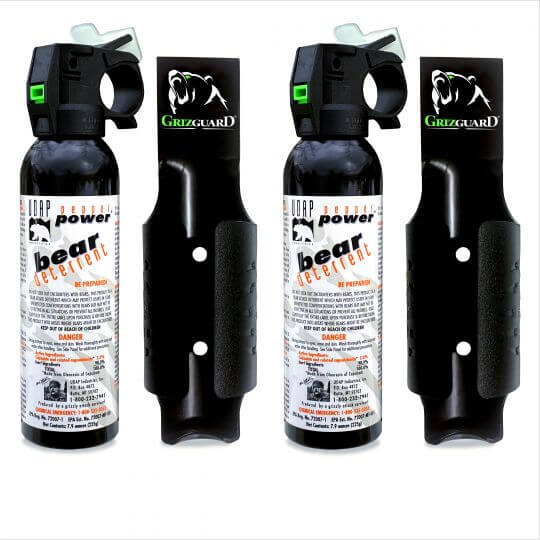
What Is Bear Spray?
Bear spray is a type of pepper spray that is designed to deter bears. It typically contains Capsaicin, which is the active ingredient in pepper spray, as well as other ingredients like water and vinegar. Only use bear spray if you are in immediate danger.
How to use bear spray?
Bear spray should only be used in the event of a bear attack. To use it, point the canister at the bear and discharge it for 6-9 seconds. The goal is to create a cloud of pepper spray that will deter the bear from attacking.
Note: The bear spray should be used when the bear is 20-30 feet away to create a cloud of bear spray.
Research conducted by Smith and Herrero shows that bear spray stopped bears’ undesirable behavior:
- 92% of the time when grizzly bears were encountered
- 90% of the time when black bears were encountered
- 100% of the time when polar bears were encountered
98% of the people who were carrying the bear spray were found uninjured.
The spray is non-lethal:
- It causes irritation in the eyes, nose, and throat of the bear.
- The active ingredient in bear spray is capsaicin, which is also found in pepper spray.
- Capsaicin is a natural irritant that causes burning and inflammation.
- It is derived from chili peppers and can be harmful if inhaled or ingested.
Keep your bear spray accessible
Make sure your bear spray is easily accessible and within reach at all times. Do not store it in your backpack, as you will not be able to get to it quickly enough if you are attacked. Instead, keep it on your hip or in a holster so you can grab it quickly and easily.
Types of holster
There are many different types of holsters available, so you can choose one that best fits your needs. Some holsters allow you to attach the bear spray to your belt, while others have a clip that can be attached to your clothing. There are also bear-resistant holsters available that are made from durable materials like Kevlar.
- Orpaz Pepper Spray Holster (Belt Loop)
- Counter Assault Backpacker (Cross Draw Holster)
- Counter Assault Holster (Trailrunner/)
How to Avoid a bear encounter
In order to avoid any unplanned encounters with bears, it is important for hikers and campers to be aware of how to properly store and dispose of food scraps.
Are bears scared of humans?
In general, it is best to assume that bears are not scared of humans and take precautions accordingly. Some bear safety tips to keep in mind include making noise while hiking, carrying bear spray, and avoiding direct eye contact with a bear.
When to go to avoid bears?
There are certain times when the chances of an encounter with a bear are higher. For example, early morning or dusk. So, it’s better to avoid these times.
Bear Encounters (What to do)
What if you see a bear?
If you see a bear, don’t run! Just calmly back away and make lots of noise so the bear knows you’re there. Avoid direct eye contact, as this may trigger a chase response from the bear.
What to do if you encounter a grizzly bear?
There is no one definitive answer to this question, as the best course of action may vary depending on the situation. However, some bear safety tips to keep in mind if you encounter a grizzly bear include staying calm, making yourself as small as possible, and making noise to scare the bear away. If the bear does attack, fight back with whatever you have to defend yourself, such as bear spray, a stick, or your fists. The goal is to make yourself as big and scary as possible to the bear.
What to do if you encounter a polar bear?
If you encounter a polar bear, the best course of action is to slowly back away and make noise to scare the bear away. Do not run, as this may trigger a chase response from the bear. If the bear does attack, fight back with whatever you have to defend yourself, such as bear spray, a stick, or your fists.
Hiking With Dogs In Bear Country
If you are hiking with a dog in bear country, be sure to keep them on a leash at all times and make noise while hiking to avoid surprising a bear. If you do encounter a bear, stay calm and make yourself as small as possible. Do not run, as this may trigger a chase response from the bear.
Cyclists And Trail Runners
If you are cycling or trail running in bear country, be sure to make noise while doing so to avoid surprising a bear. Avoid shrubby areas and corners. Try to stay on the main trail and keep your bear safety spray with you.
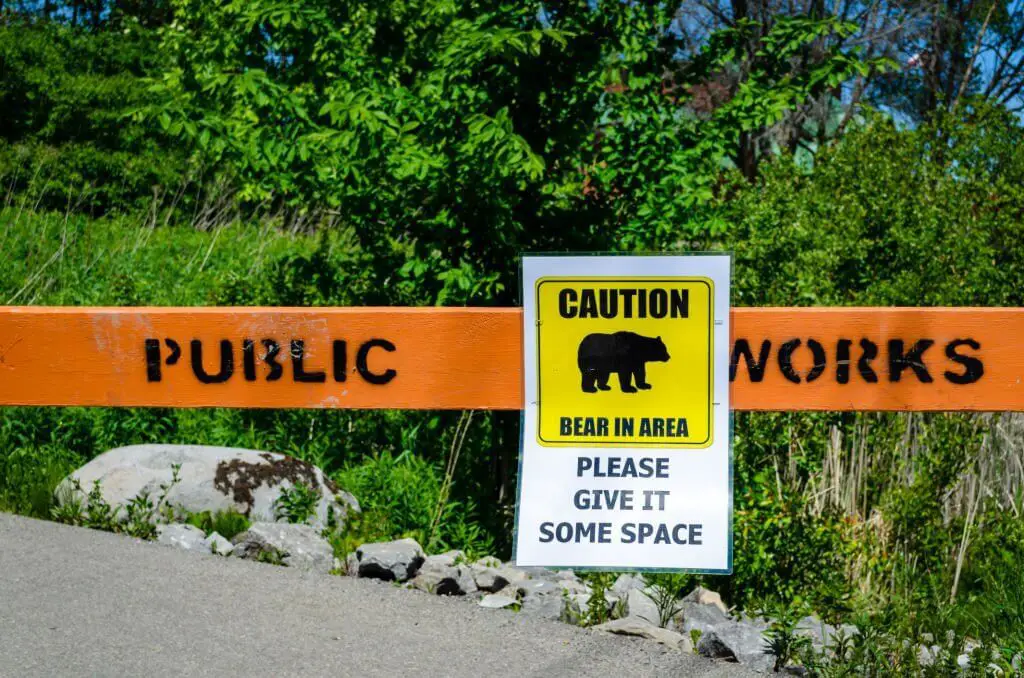
Bear Body Language
Bears communicate through body language. It is important to be able to read a bear’s body language in order to know when it is feeling threatened. Some signs that a bear is getting ready to attack include growling, making loud noises, and appearing aggressive.
I hope you would like and appreciate this how to be safe around bears complete guide. I have collected this information with proper research and authentic sources. You are free to share your experiences. I would love to know if you have any suggestions in the comment section below.
You may like:

